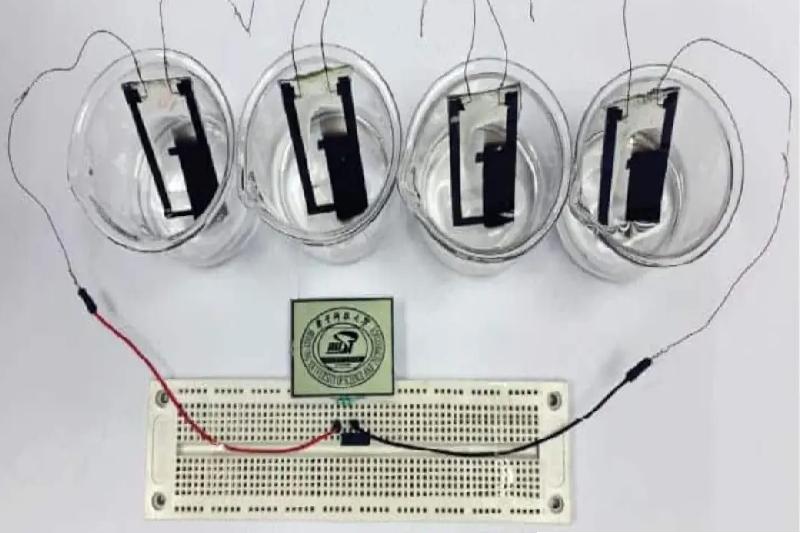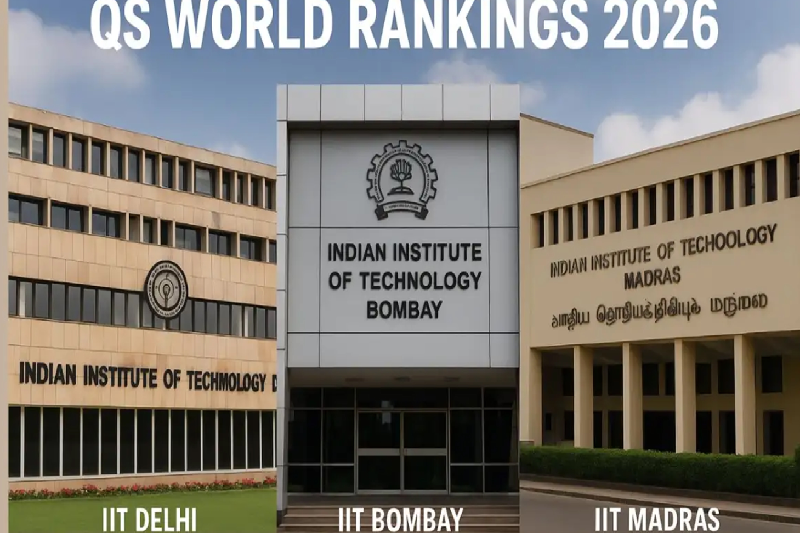
IIT Indore Researchers Develop Device to Generate Electricity from Water and Air
A Breakthrough in Clean Energy Innovation
In a remarkable advancement for sustainable energy, researchers at the Indian Institute of Technology (IIT) Indore have developed a device that generates electricity using a natural and everyday process—water evaporation. This innovation represents a significant step forward in clean energy solutions and has the potential to reduce dependence on fossil fuels.
The newly developed device leverages microscopic channels that allow water to move through as it evaporates. This movement triggers ion activity, which in turn produces an electric current. While the prototype is designed for small-scale applications, the research team believes the technology can eventually be scaled up for broader use.
One of the researchers involved in the project explained,
“This technology demonstrates that everyday natural processes like evaporation can be tapped as a reliable power source.”
This highlights the promise of converting simple, naturally occurring phenomena into viable renewable energy sources.
How the Device Works
The concept behind IIT Indore’s invention is rooted in the interaction between water and air during evaporation. By creating microscopic channels, researchers enabled water molecules to flow in a controlled manner. As the water evaporates, it sets ions into motion, generating an electrical charge.
The mechanism may sound small in scale, but its implications are vast. This approach offers a sustainable way of producing power without external fuels, combustion, or emissions, making it eco-friendly and cost-effective once fully developed.
Currently, the device is designed for low-energy uses, such as powering electronic sensors, medical devices, or other small gadgets. Still, researchers aim to refine its efficiency for larger-scale applications in the future.
India’s Growing Emphasis on Clean Energy Research
This development by IIT Indore is not an isolated achievement. In fact, India’s IITs have been at the forefront of clean and decentralised energy innovations, contributing significantly to the global push for sustainability. Several campuses across the country have been working on groundbreaking projects:
- IIT Delhi (2021): Developed a device to generate electricity from raindrops, ocean waves, and even household taps, with the ability to store energy in batteries for future use.
- IIT Madras: Created a microbial fuel cell that uses wastewater to produce electricity, turning sewage into a potential energy resource while addressing sanitation challenges.
- IIT Jodhpur: Pioneered research on perovskite solar cells, which promise greater efficiency and lower costs than traditional silicon-based solar technology.
- IIT Kharagpur: Experimented with biodegradable batteries to tackle the growing issue of electronic waste and promote sustainable alternatives in energy storage.
Together, these efforts show how Indian institutions actively contribute to a cleaner, more self-reliant energy future. The IIT-Indore project adds another dimension by focusing on a natural and widely available process like evaporation.
Why Evaporation as an Energy Source?
Water evaporation is one of the most abundant and constant natural processes. It occurs every day, across geographies, without requiring artificial stimulation. By capturing energy from this natural phenomenon, researchers are opening new doors to decentralised power generation.
Unlike solar or wind energy, which are weather-dependent and location-specific, evaporation happens continuously in most environments. If harnessed effectively, it could be a stable and accessible energy source in regions with limited infrastructure or erratic power supply.
Potential Applications
Although still in its developmental stage, the IIT Indore device could have wide-ranging applications once scaled up. Some potential areas include:
- Low-energy electronics: Powering sensors, wearable devices, or small monitoring systems.
- Healthcare: Supporting portable medical devices in remote or rural areas with inconsistent electricity access.
- Environmental monitoring: Deploying sensors in fields or forests without reliance on batteries or external power.
- Decentralised energy solutions: Offering alternative energy sources for households or communities in regions with limited grid connectivity.
As the technology advances, researchers envision adapting it to contribute meaningfully to national energy demands.
Expert Insights on the Impact
Energy experts suggest that innovations are critical for countries like India, where the demand for electricity is rapidly rising. Still, reliance on coal and fossil fuels remains high. Clean and low-cost alternatives can help bridge the gap between growing consumption and sustainability goals.
Moreover, small-scale, decentralised energy devices can empower rural communities, reduce infrastructure costs, and minimise dependence on centralised power grids.
Challenges and the Road Ahead
Despite the promise, the IIT Indore device is still in the early stages of development. The immediate challenges include:
- Efficiency: Improving the amount of electricity generated to make the device practical for real-world usage.
- Durability: Ensuring the device performs consistently in varied climatic and environmental conditions.
- Scalability: Adapting the design from small-scale prototypes to applications serving households or industries.
The research team is committed to refining the design, further testing, and exploring practical adaptations for diverse sectors.
India’s Path to a Sustainable Future
With projects like these, India continues demonstrating its commitment to innovation in clean energy. The National Education Policy (NEP) 2020 and national sustainability initiatives have encouraged IITs and other institutions to focus on decentralised, renewable, and affordable energy technologies.
As the world achieves net-zero emissions, breakthroughs like the IIT Indore device show how simple natural processes can be transformed into cutting-edge solutions.
Conclusion
The device developed by IIT Indore researchers to generate electricity from water evaporation is a promising step toward redefining clean energy. While the prototype is still in its infancy, it underscores the untapped potential of natural processes and reinforces the role of Indian institutions in pioneering sustainable technologies.
If scaled effectively, this innovation could play a transformative role in reducing reliance on fossil fuels, powering everyday devices, and supporting India’s broader goal of becoming a leader in sustainable and decentralised energy solutions.


